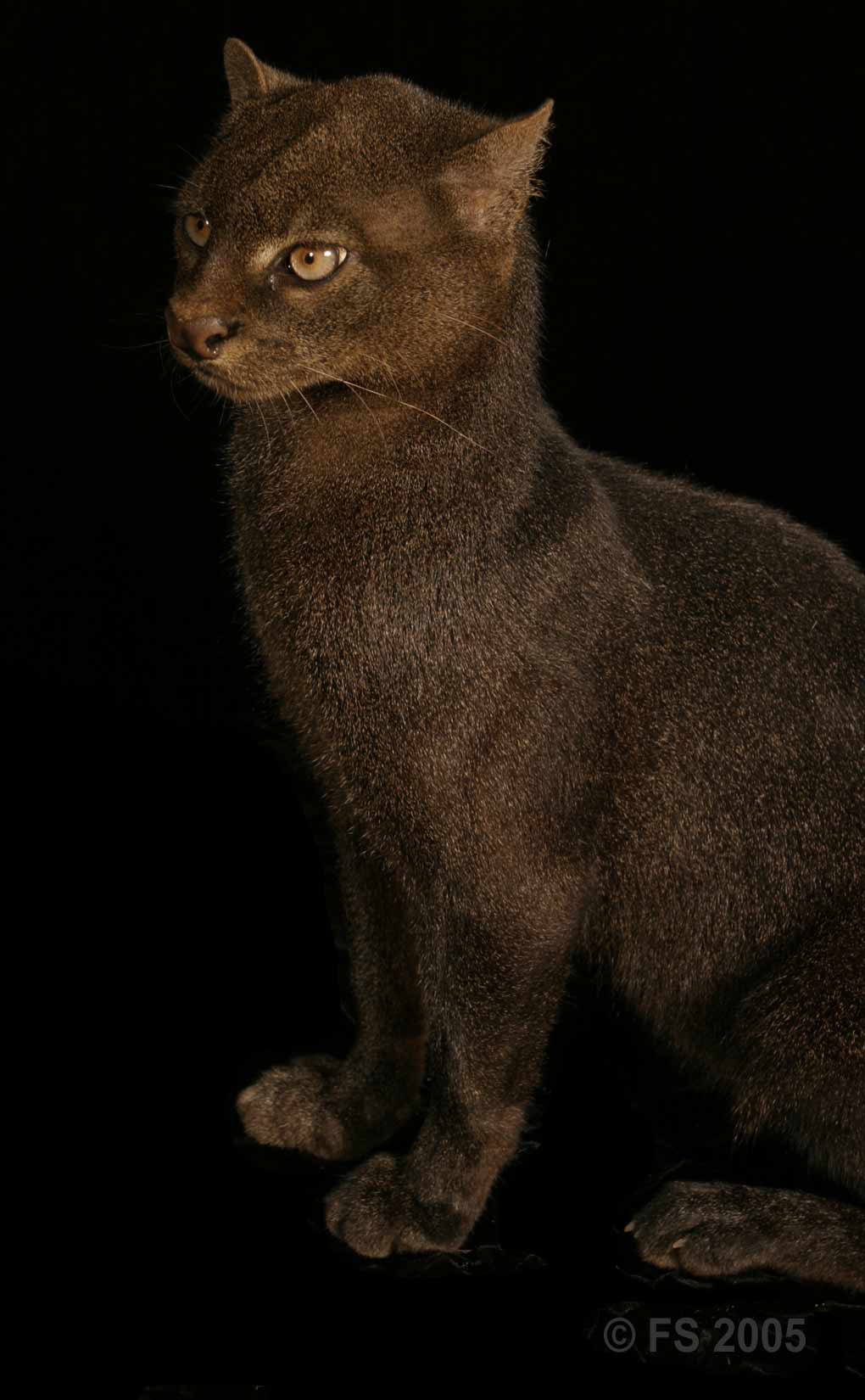Jaguarundi ( Felis yagouaroundi): Classification: Class: Mammalia, Order: Carnivora, Class: Felidae, Genus: Felis, Species: yagouaround
Status: Threatened in U.S., Of International Concern
The Jaguarundi's unique shape more closely resembles that of an otter or a weasel than that of another cat. Hence, its English common name is “otter cat.” Their bodies are long and low and supported by short legs. Their tails average about 20 inches. They have proportionally small heads, small ears, and narrow brown eyes. Their pelage (fur) is uniform in color, but ranges amongst individuals from black to brownish grey to red. Individuals inhabiting forested areas are usually darker, while those in more arid regions tend to be lighter. (http://dspace.dial.pipex.com/agarman/jundi.htm) Males average around 5.9 kg (13 lbs.) while females average 4.4 kg (9.7 lbs.) (http://www.tpwd.state.tx.us/nature/endang/animals/jag.htm) .
The range of the Jaguarundi extends from parts of Texas all the way south to Argentina. They tend to prefer dry shrubland but are often seen in more densely forested areas. Jaguarundis like cover and running water and are skilled at using their paws to catch fish. Their diets are relatively diverse and consist of fish, birds, rodents, assorted small mammals, reptiles, and even arthropods. They have been observed hunting both day and night, yet seem to be most active at dawn and dusk (which is known as being crepuscular). They are skilled tree climbers (they rest in trees) but prefer hunting on land (http://dspace.dial.pipex.com/agarman/jundi.htm).
Although these creatures are solitary hunters, they tend to be social when raising young. Jaguarundis have a gestation period (the time between conception and birth) of about 70 days. 2-4 kittens are born per litter (with 2 litters a year). The kittens are independent about 3 months after birth.
Jaguarundis have a life span of 15 years.
(http://www.americazoo.com/goto/index/mammals/313.htm).
The fur of the Jaguarundi is not considered valuable, so over-hunting has not been a problem. However, the species is under increasing pressure from habitat encroachment. They are listed as endangered in the United States and are of international concern (http://dspace.dial.pipex.com/agarman/jundi.htm).
CLICK HERE FOR MORE EXTRAORDINARY
ANIMALS and PLANTS OF YASUNÍ,
THE MOST BIODIVERSE FOREST KNOWN ON EARTH
Yasuní Biodiversity Main Page
|

